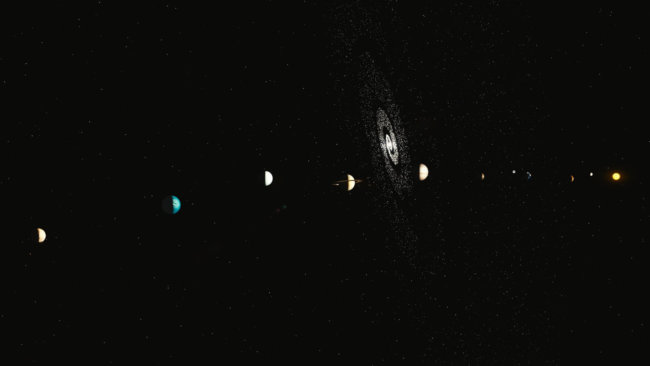
Opening the way into space, we, of course, did not stop and started to search in it for signs of living organisms, proving that we are not alone in this Universe. Unfortunately, no progress in this direction. However, an accumulating volume of research data has given us a clearer indication of where in the Solar system we should look for better.
Seth Shostak, senior astronomer of the Institute of search for extraterrestrial life (SETI), suspects that within our system there may be places where the most likely to have at least microbial life.
“Within our system there are at least seven such places. Seven places where there might be microbial life. They are all from us at almost arm’s length. It remains only to take a rocket to reach them”, says Shostak portal Futurism.
He also believes that we are likely to discover that microbial life before we find extraterrestrial intelligent life. Can you guess what other places is it?
Mars is certainly one of those places, says Shostak. It is possible that the lower forms of life lurk beneath the surface of the red planet at a depth of about 30 meters and below, where else can remain the water supply.
In addition to Mars, the three satellites of the gas giant Jupiter are also likely candidates. One of them – Europe — the planetoid, with subsurface oceans, in theory, capable of supporting microbial life. It is more likely that its main concentration near the hot springs at the bottom, acting as “a tiny mini-volcanoes, provides you with the energy for life,” says Shostak. The other two Ganymede, the largest moon among all the moons of the Solar system and planetoid containing water, the composition is very close to the Earth, but hidden under a thick layer of ice surface, as scientists say; and Calisto, whose scientists also suspect the presence of ocean and atmosphere.
Saturn, another gas giant of our system, also a couple of satellites, in theory, capable of supporting life. We learned this thanks to the space probe “Cassini”, may the Lord his “digital soul”. One of these satellites is Titan, has lakes of liquid natural gas. The other is Enceladus, which, according to the same Shostak, as, however, and other scientists, has more suitable conditions for life. To find microbial life there will be easier, because “the satellite has a habit of spitting geysers into space.” There even to sit is not necessary. How don’t have to be boring, explains the scientist.
“You just need to grab the discarded material, to bring it back to Earth, we finally find the real aliens.”
The latest is the Pluto.
“Under the surface of Pluto may be hiding pockets filled with liquid water,” says Shostak.
“Anywhere, wherever you find liquid water (as well as any liquid in one form or another), there may be germs”.
However, the scientist makes some remark and adds:
“I’m not saying that we will find there “Plutona”.
In the seven above-mentioned places there are right and necessary organic processes, which can serve as a source of food or energy, and a supply of liquids, not necessarily water to support microbial life.
“You have something that gives you food, and in a fundamental sense, this gives you the ability to create life, which is essentially a simple set of organic chemistry”.
On the question of when, in his opinion, humanity will discover extraterrestrial life, Shostak said that the theme of the next two decades.
“There are many places where it could theoretically be. In one of the milky Way trillions of planets. We can see a trillion other galaxies, each of which again may be a trillion planets. If among all this variety no one, then we, apparently, really unique in its kind”.
In seven places in the Solar system could exist microbial life
Nikolai Khizhnyak